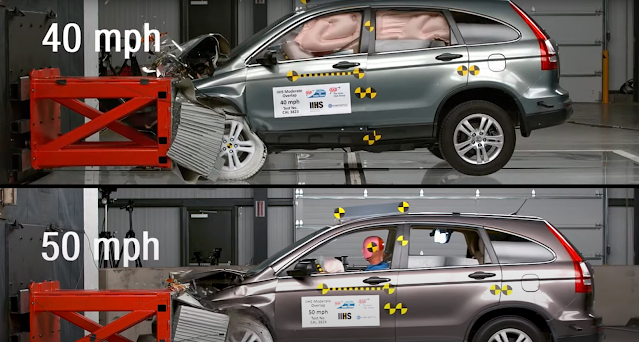The safety of vehicles on our roads is a paramount concern for organizations like the Insurance Institute for Highway Safety (IIHS). They play a pivotal role in evaluating the crashworthiness of vehicles, but have you ever wondered why they test vehicles at certain speeds? In this article, we delve into the rationale behind IIHS's choice of test speeds and why they matter.
Why 40 mph (64.3 km/h)?
Despite vehicles being legally permitted to travel at speeds up to 85 mph (136.7 km/h) on certain roads, the IIHS conducts its crash tests at a seemingly moderate 40 mph (64.3 km/h). This deliberate choice is not arbitrary but is rooted in a deep understanding of real-world accident scenarios.
Safety in Common Accidents
Unlike the National Highway Traffic Safety Administration (NHTSA), which tests collisions at 35 mph (56.3 km/h), the IIHS focuses on replicating common accidents rather than just the most severe crashes. By doing so, they aim to influence vehicle design to enhance safety across a spectrum of real-world scenarios.
Impact on Vehicle Design
The selection of the appropriate crash test speed is critical as it directly influences vehicle design. Even a slight increase in test speed can lead to a significant shift in crash forces. For instance, at 50 mph (80.4 km/h), crash forces escalate by a staggering 56%. This increase in force necessitates alterations in vehicle design to ensure optimal safety performance across various collision scenarios.
Balancing Safety Across Severity Levels
One might question why not test at higher speeds to ensure safety in the most extreme accidents. However, focusing solely on high-speed crashes could inadvertently compromise safety in lower-severity collisions. The IIHS aims to strike a delicate balance, ensuring that vehicle designs prioritize safety across the entire spectrum of crash severities.
The Bottom Line
The IIHS's decision to test collisions at 40 mph (64.3 km/h) is not about restricting vehicles but about enhancing safety. By replicating common accidents at this speed, they can influence vehicle design to better protect occupants in real-world scenarios. Understanding the rationale behind test speeds sheds light on the complexities involved in ensuring the safety of vehicles on our roads.

Comments
Post a Comment